Meme Culture Engagement: How Memes Drive Connection and Results
Updated On: October 24, 2025 by Aaron Connolly
Understanding Meme Culture Engagement
Meme culture sparks a different kind of digital engagement. Internet users connect over shared jokes, inside references, and viral moments.
Unlike traditional social media, memes demand cultural fluency and a knack for timing. You have to jump into conversations that shift constantly.
Defining Meme Culture and Its Key Elements
Meme culture is all about people creating and sharing funny, relatable stuff online. At the heart of it, memes work as cultural currency—they let people say a lot with very little.
You’ll spot familiar formats, running jokes, and loads of community participation. Think of classics like “Drake pointing” or “This is fine”—people keep reusing and tweaking these to fit new situations.
Every good meme nails three things:
- Relatability – it hits on something most people get
- Shareability – you can pass it along in a second
- Adaptability – you can change it up for almost anything
The magic comes from how people don’t just scroll past memes—they remix, reword, and spin out fresh takes. Each new version bounces through different corners of the internet.
Different platforms shape memes in their own ways. Instagram leans into visuals, Twitter loves quick wit, and TikTok? It’s all about audio and video trends.
How Online Culture Shapes Meme Trends
Online culture decides which memes blow up and which ones flop. Each community brings its own sense of humor, values, and ways of talking.
Platforms create their own meme playgrounds:
| Platform | Meme Style | Speed | Audience |
|---|---|---|---|
| Text-heavy, commentary | Lightning-fast | News-focused | |
| Visual, lifestyle | Moderate | Younger demographics | |
| TikTok | Video, audio-based | Viral bursts | Gen Z dominant |
| Format-driven, niche | Varied | Community-specific |
Timing is huge. Big news, cultural moments, or even just the right season can launch a meme into orbit. The best memes capture whatever everyone’s thinking right now.
Communities push memes forward by riffing on each other’s ideas. People tweak jokes to fit their own lives, which keeps things feeling real instead of forced.
The Psychology of Memes in Digital Interaction
Memes click with us because they tap into basic human psychology. They create a sense of in-group belonging by referencing stuff we’ve all experienced—or at least recognize.
When you see a meme that gets you, it’s like, “Oh, someone else feels this too.” That little jolt of recognition? It sticks with you more than a bland post ever could.
People don’t just look at memes—they want to join in. Memes practically beg you to share, tweak, or make your own spin.
Humor lights up the brain’s reward system, so meme marketing often builds brand love faster than traditional ads. The emotional connection comes on strong and lingers.
Memes also act as social proof. Sharing a meme at the right time shows you’re in the loop, part of the group. That’s a powerful pull—way beyond just a quick laugh.
Honestly, that’s why so many corporate memes fall flat. People spot a fake a mile away, and they’ll either ignore it or call it out.
The Role of Humour in Meme Culture
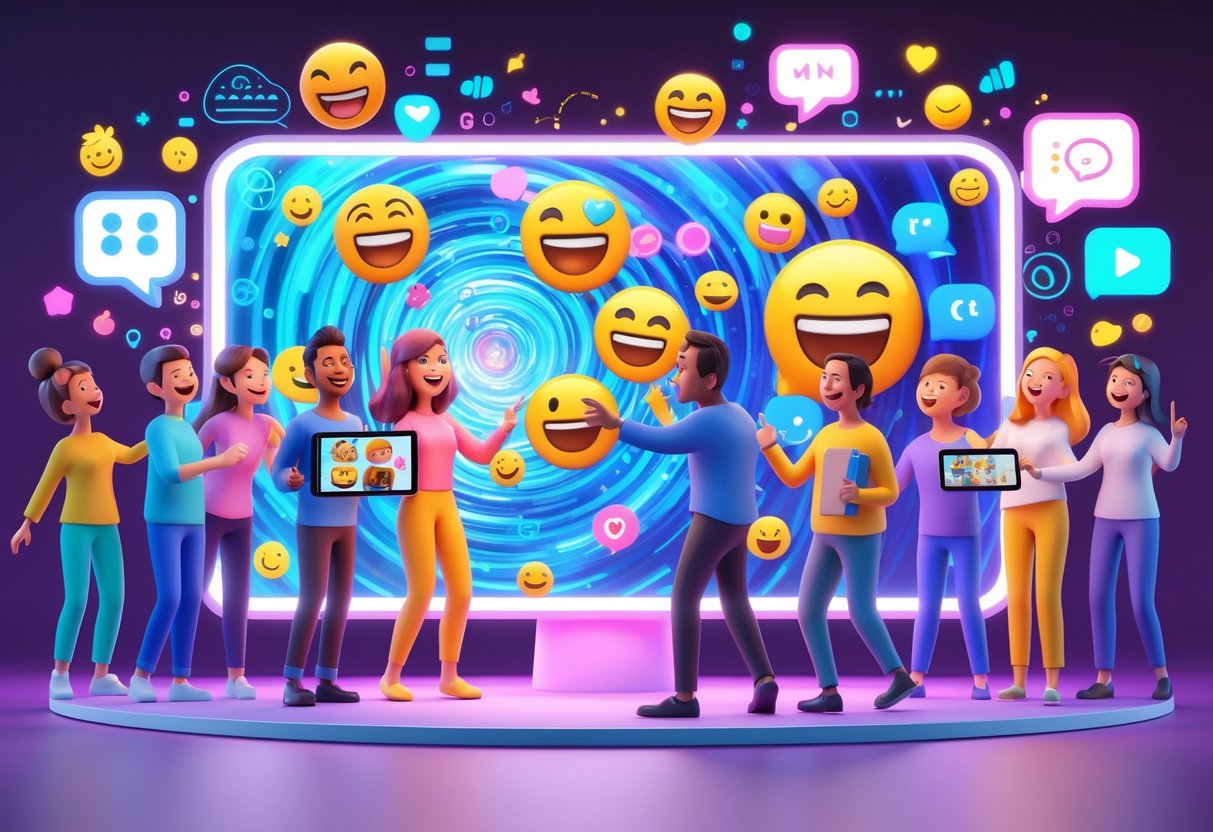
Humor drives meme culture’s wild popularity online. The right joke or clever twist can spark a flood of shares and comments.
Different comedic styles help people connect emotionally, making them want to spread memes across their feeds.
Types of Humour Used in Memes
Satirical humor rules the meme world. It pokes fun at news, trends, or everyday life, making people laugh and think at the same time.
Self-deprecating jokes let us laugh at ourselves. Memes about work stress or awkward moments make people feel seen.
Absurd humor takes normal stuff and makes it ridiculous. That “Distracted Boyfriend” meme? It’s everywhere because you can twist it into almost anything.
Observational comedy points out things we all notice but rarely say. Those “so true” memes are the ones everyone wants to send to a friend.
Pop culture references blend trending topics with familiar templates. When brands like Ryanair use these, they tap instantly into what people already know.
Why Humour Sparks Online Engagement
Humor knocks down emotional walls between brands and followers. If you make people laugh, they’ll stick around.
When a meme lands, people rush to share it. They want their friends to get that same hit of joy.
Funny posts rack up comments and tags. People add their own jokes or pull friends into the conversation.
We remember brands better when they make us laugh. Comedy just sticks in your brain longer than a boring ad.
Studies show that engagement rates shoot up when memes are in the mix. Ryanair’s Instagram proves it—they pull in more than 1,000 new followers a week, mostly thanks to memes.
Relatability and Shared Experiences
Memes about everyday struggles become instant connection points. Stuff like hating Mondays or dealing with awkward moments bonds total strangers.
Cultural references pull communities together. Gaming memes work because players all know the same joys and headaches.
Generational humor splits people into digital tribes. Each age group riffs on different jokes and references.
Universal experiences—like flight delays or tech fails—get way funnier as memes. That’s why Ryanair’s travel jokes hit home for so many.
Inside jokes start popping up when communities use the same meme formats over and over. It’s like a secret handshake that keeps people coming back.
Audience Dynamics: Gen Z and Millennials
Gen Z and Millennials don’t just scroll memes the same way. Each group brings its own style, references, and expectations.
These differences shape how brands reach them with meme marketing.
Gen Z: Communication Through Memes
Gen Z basically speaks in memes. They share more than 75% of viral content, so memes are their go-to for expressing everything.
How Gen Z Communicates:
- Fast-paced: They zip through 20-30 memes a day
- Ironic humor: Edgy, self-aware jokes win them over
- Niche references: “If you know, you know” memes rule
- Platform-native: TikTok sounds, Instagram Stories, Twitter threads
Gen Z cares a lot about authenticity. They spot fake brand memes in seconds.
Brands like Ryanair nailed it on TikTok, landing 1.6 million followers by keeping things real and a little rough around the edges.
This crowd expects brands to keep up with trends, fast. If you miss a meme moment, even by a day, you look out of touch.
They reward brands that just get their digital world.
Millennials and Meme Consumption Habits
Millennials do memes their own way. They lean hard into nostalgia and jokes about grown-up problems.
Millennial Meme Style:
- Nostalgia: 90s and 2000s pop culture everywhere
- Adulting jokes: Work, mortgages, parenting woes
- Longer stories: They like memes with a bit more detail
- Facebook and Instagram: Not as much TikTok as Gen Z
Millennials share memes more carefully. They pick stuff that fits their vibe and life stage.
Brands win with them by talking about real issues—career stress, money, family.
This group likes brands to blend in, not shout. Subtle product drops inside relatable memes work way better than obvious ads.
Generational Differences in Meme Preferences
The gap between Gen Z and Millennials shapes how you should approach meme marketing. Knowing these quirks helps you hit the right note.
| Aspect | Gen Z | Millennials |
|---|---|---|
| Humor Style | Ironic, absurd | Nostalgic, relatable |
| Content Speed | Instant, fleeting | More thoughtful |
| Platform Focus | TikTok, Twitter | Facebook, Instagram |
| Brand Tolerance | Only authentic | Subtle integration |
Timing:
Gen Z wants brands to jump on trends within hours. Millennials prefer content that feels polished, even if it’s slower.
References:
Gen Z memes riff on what’s hot right now. Millennials love callbacks to their childhood or big shared moments.
Both groups tune out obvious ads dressed up as memes. Gen Z might forgive a bad meme if you bounce back and learn. Millennials? They remember a flop for a long time.
Memes as Tools for Engagement
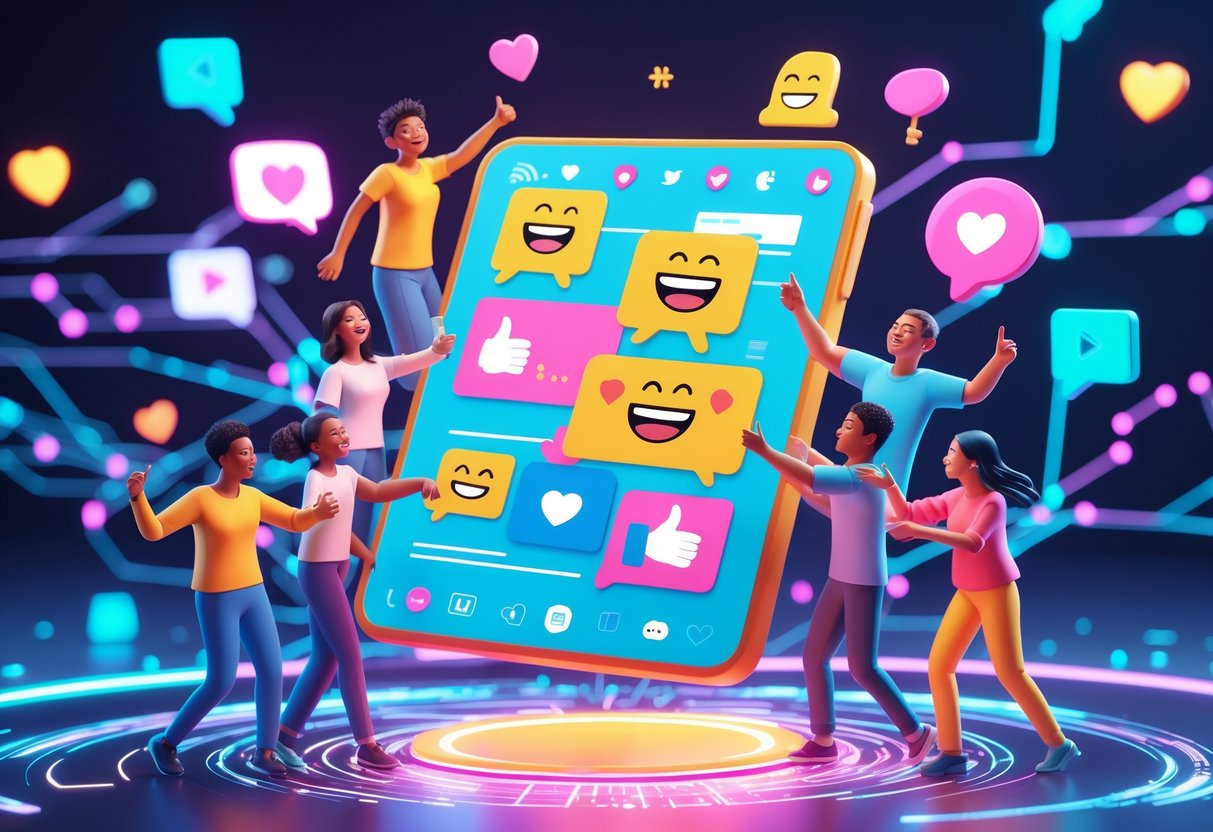
Memes help brands connect with people on a real level. When a meme clicks, it turns casual scrollers into active fans—tagging friends, sharing, and jumping into the comments.
Building Community with Memes
Memes thrive when they reflect the inside jokes and moments that pull communities together. They give people a sense of belonging.
Shared experiences are the glue. If you post a meme about lag ruining an esports match, every gamer knows that pain. That instant recognition beats any sales pitch.
Cultural references shape group identity. Gaming memes often nod to specific games, streamers, or epic fails. These signals say, “You’re one of us.”
Inside jokes grow naturally from meme repetition. Over time, certain images or catchphrases become a kind of secret code. People stick around because they feel like they’re in on it.
You’ve got to know your audience, though. Generic memes won’t cut it. Dive into what your community laughs about, what bugs them, and what makes them tick.
Encouraging Shares, Comments, and Virality
Relatable memes get shared the most. When a meme nails a universal feeling—like staying up too late gaming—people can’t resist sending it around.
Tagging happens naturally if the meme fits. If someone sees a meme and thinks of a friend, they’ll tag them without a second thought.
Memes that invite responses—like fill-in-the-blanks or hot takes—spark more comments. People want to add their own spin or story.
Simple formats spread faster. Clear images with easy text beat complicated videos almost every time.
The best memes mix humor with a hint of truth. They make you laugh, but they also make you nod in agreement.
Interaction Metrics: Measuring Engagement Levels
Engagement rates jump when memes hit home. Watch for spikes in likes, shares, and comments compared to your usual posts.
Share-to-like ratios tell you if a meme really resonates. If people share it almost as much as they like it, you’re onto something.
Quality comments matter more than just emojis. Look for people telling their own stories or riffing on the meme.
Reach grows when a meme takes off. Track how far your post travels outside your regular followers. Viral memes can reach whole new crowds.
| Metric | Good Performance | Excellent Performance |
|---|---|---|
| Engagement Rate | 5-8% | 10%+ |
| Share Rate | 2-5% of likes | 8%+ of likes |
| Comment Length | 1-2 sentences | Multiple sentences |
| New Followers | 1-3% increase | 5%+ increase |
Keep an eye on these numbers to figure out which memes and topics your audience loves most.
Brand Visibility and Meme Culture
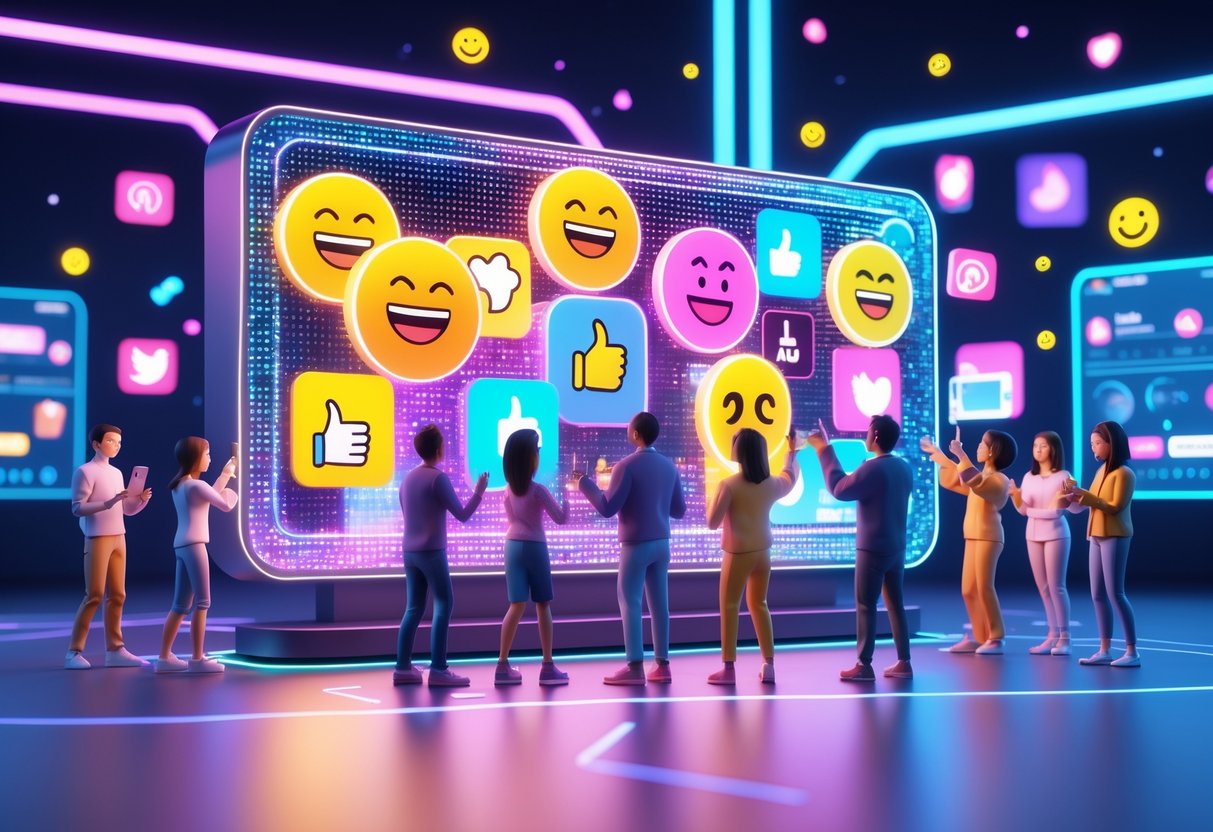
Memes really shake up how brands connect with gaming audiences. They cut through the digital noise with content that’s actually fun to share and easy to relate to.
But here’s the tricky part: you’ve got to jump on viral trends at just the right moment, and still keep things authentic in the competitive gaming world.
Enhancing Brand Awareness with Memes
Memes make esports brands instantly recognizable to younger crowds. When brands like Duolingo rack up 15 million followers with clever meme content, it’s hard to ignore the power of cultural relevance.
Some strong brand awareness tactics:
- Twist popular meme formats with gaming references
- Respond fast to whatever’s trending
- Keep content feeling natural, not like forced advertising
Gaming organizations that nail meme timing see engagement rates jump by 30% compared to traditional posts.
Teams like G2 Esports mix pro updates with memes that fans genuinely want to share.
Understanding your audience’s sense of humor is everything. Esports fans love self-aware content that gets gaming culture—without trying too hard.
Quick win: Watch what’s trending on Reddit’s gaming subs, then adapt the best memes for your brand’s voice.
Standing Out in a Crowded Digital Space
Every day, thousands of gaming posts fight for attention. Memes break through because people love sharing them.
Sharp esports orgs use memes to:
- React to match results with trending formats
- Celebrate player wins using popular templates
- Tackle community feedback with a sense of humor
The fastest-growing gaming brands don’t post memes at random. They plan out content calendars to balance serious updates with lighter, shareable stuff.
Different platforms, different moves:
| Platform | Best Meme Type | Timing |
|---|---|---|
| Twitter/X | Quick reactions | Within hours of trends |
| Visual templates | Daily posting | |
| TikTok | Video memes | Multiple daily |
Teams that stick to a regular posting rhythm get better results than those just chasing every viral moment.
Risks and Rewards of Viral Content
What you get when it works:
- Huge reach without spending on ads
- Real audience engagement
- Long-term brand recognition
But yeah, there are risks:
- Memes burn out fast
- If you misread a trend, you risk your reputation
- Not every meme fits your brand
Gaming brands face their own hurdles. A meme that’s hilarious for a casual mobile game might totally flop for a pro esports org.
Heads up: Always watch for cultural sensitivity. Gaming communities are global and humor doesn’t always translate.
The best gaming brands test meme content with small groups first. They track which formats click with their community before going big.
If a meme backfires, backlash can travel faster than the original post. It really pays to have clear guidelines about what topics to avoid.
Meme Marketing Strategies
Winning at meme marketing means you need a plan. It’s about balancing cultural relevance with brand authenticity, so your content actually resonates and still looks professional.
Crafting an Effective Meme Marketing Strategy
Start by really knowing your audience and keeping up with internet culture. It’s not just about what’s funny—it’s about what clicks with your crowd.
Begin with audience research. Different ages like different meme styles. Gen Z loves TikTok-style videos, while Millennials might prefer nostalgic or text-based memes on Twitter.
Check trending topics daily. Memes don’t last long. Use social listening tools to spot what’s about to blow up—before it peaks.
Build a content calendar that mixes memes with regular posts. A good mix? Maybe 20-30% memes, so you don’t overdo it but still keep things lively.
Budget for speed. Meme marketing works best when you can react fast. If you’ve got designers and approvals ready, you’ll always have a leg up.
Try different formats and see what sticks. Some folks like images, others go for video memes or GIFs. Watch your engagement stats to see what your audience actually likes.
Aligning Memes with Brand Voice
Your memes should sound like your brand and still fit internet culture. That’s a tough balance, but it keeps you from looking out of touch.
Set clear guidelines for humor and topics. Make a list of what’s fair game and what’s off-limits, so you don’t accidentally post something that backfires.
Keep your tone consistent. If your brand is all business, go for clever wit—not crudeness. If you’re more casual, you can loosen up.
Add your own spin. Don’t just copy a meme—put your brand’s twist on it. Show your expertise or company vibe. That’s what makes content memorable.
Subtle branding works best. A small logo or your brand colors are enough. Don’t slap your product all over the meme—it just feels forced.
Train your team on what makes a meme work. Everyone posting should know how to avoid stale jokes or forced humor.
Integrating Memes Into Broader Campaigns
Treat memes as part of your bigger marketing picture, not just one-off posts. When you weave them into your campaigns, you get way more impact.
Connect memes to your campaign themes. If you’re launching something new, create memes that riff on your main message but add a little humor.
Adapt memes for each platform. Take one idea and tweak it for Instagram Stories, Twitter, or TikTok, so it fits each audience.
Track performance metrics to see which memes actually drive results. Look at engagement, shares, and conversions.
Try meme series. Build on jokes over time so your followers start to look forward to the next one.
Time your memes with other marketing pushes. Drop them with email blasts, product launches, or events to create more touchpoints.
Authenticity in Meme Engagement
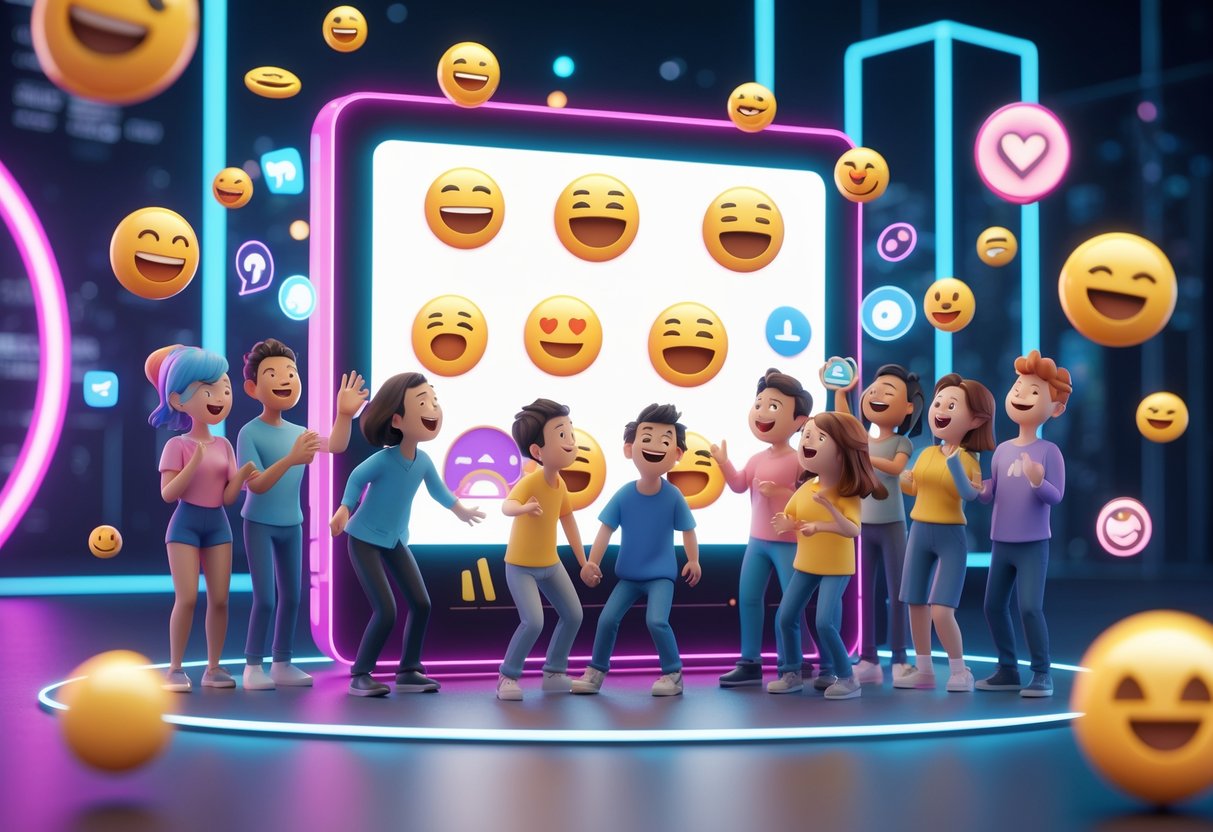
If you want to build authentic connections with memes, you have to skip the forced stuff and know where the cultural boundaries are. The real trick? Create genuine moments that actually mean something to your gaming community.
Avoiding Forced or Inauthentic Memes
Nothing tanks engagement faster than a meme that screams “corporate.” You see it all the time: brands jump on trends they don’t get, and gamers spot the fakeness instantly.
Heads up: Posting outdated memes or misusing popular formats kills your credibility. Gamers know when you’re just trying to cash in.
The best esports orgs pull memes from their own real moments. If Team Liquid’s players do something hilarious in practice, their social team captures it and turns it into content—no need to force a trending format.
Quick win: Use funny stuff from your own gaming life. If your teammate messes up epically, turn it into a meme instead of copying someone else’s.
Signs your memes are falling flat:
- You use stiff, corporate language
- You jump on trends after they’re already old news
- You force your brand into every meme
- You ignore the original context
Fostering Genuine Connections
Real meme engagement happens when you get your community’s experiences. People connect with stuff that mirrors their struggles, wins, and inside jokes.
The best esports memes come from moments we all share. Anyone who’s played ranked knows the pain of losing because of one teammate’s mistake.
Ways to connect:
- Shared gaming headaches (lag, toxic teammates, bad matchmaking)
- Universal moments (clutch wins, epic fails)
- Seasonal stuff (tournaments, game updates)
- Inside jokes (game mechanics, pro player quirks)
Gaming journalist James Connolly puts it well: “The memes that work best in esports are the ones that make players say ‘that’s exactly how I felt’ instead of ‘this brand is trying too hard.’”
Real numbers back this up. Authentic gaming memes get three times more shares than straight-up branded content.
Cultural Sensitivity and Appropriateness
Gaming is global, so cultural awareness matters a lot. What’s hilarious in one country might be weird or even offensive somewhere else.
You’ve got to check for regional humor, references, and social norms. British gamers might love self-deprecating jokes, but American audiences tend to like more direct stuff.
Do your homework:
- Know local gaming cultures
- Reference local esports personalities
- Watch out for cultural holidays and big events
- Get the slang right
Avoid these pitfalls:
- Stereotyping regions
- Joking about cultural differences
- Stealing memes from communities you don’t belong to
- Posting time-sensitive content at the wrong hour
Since esports is everywhere, your memes could reach anyone. Test them with a diverse group before you hit post.
If a meme bombs, own up to it. Admit the mistake and move on—don’t double down or make excuses.
Creating Original Memes for Brands
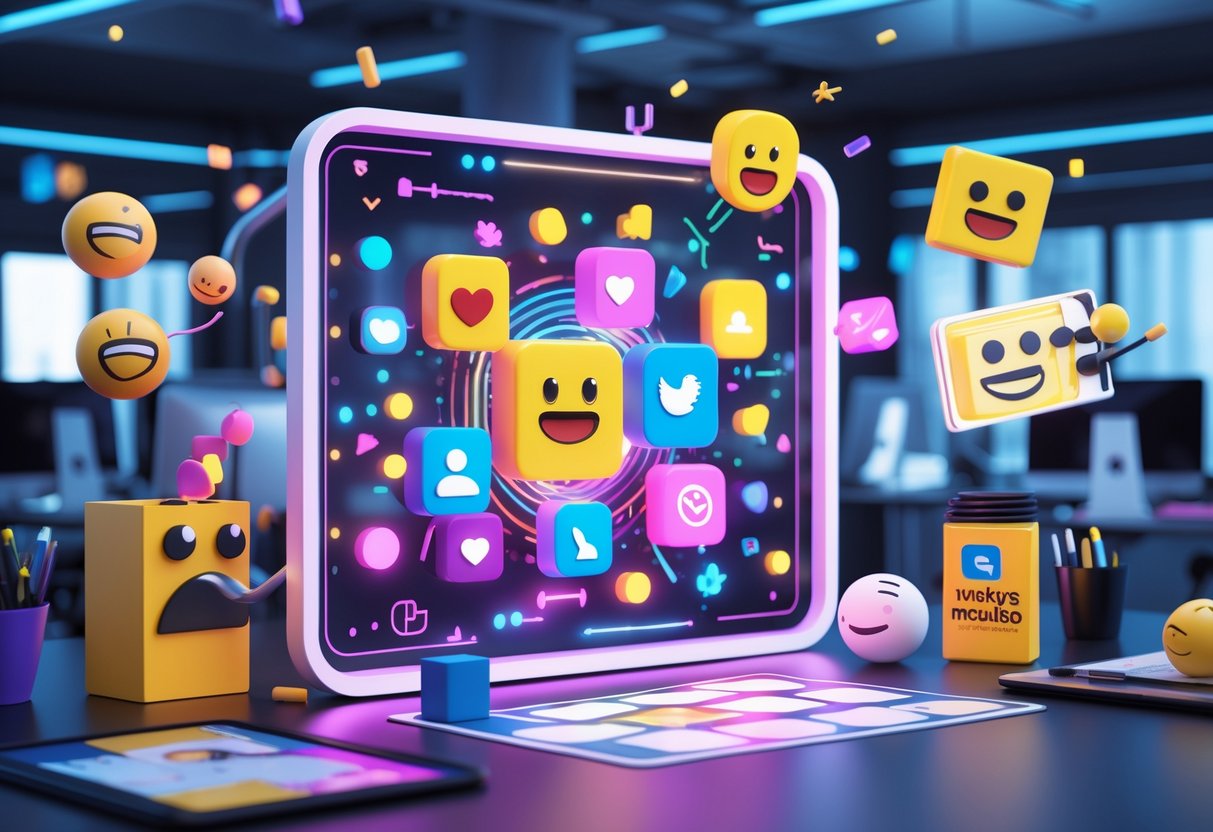
Smart brands make their own memes to control the message and connect deeper with fans. Creating fresh content usually gets way better engagement than just hopping on old trends.
Benefits of Producing Original Memes
Total creative control means you decide exactly how your brand shows up in a meme. You can shape the message so it fits your vibe and values.
Original memes give you a first-mover edge. If you start a new format, people share it before your competitors can even react.
Brand visibility jumps with original content. Studies show memes get 30% more engagement than regular posts.
You build real connections when your memes feel honest. Original stuff proves you get internet culture, not just follow it.
It’s cost-effective, too. You spend more on creativity, less on licensing or influencer deals.
Plus, your content stays fresh longer. Original memes don’t get stale like overused templates.
Success Stories: Brand-Led Meme Formats
Netflix started the “Netflix and chill” meme, and now everyone uses it. It began as their idea and spread everywhere.
Wendy’s made roasting people on Twitter their thing. Their witty burns turned into a whole new meme style that other brands now try to copy.
Spotify Wrapped became a yearly meme fest. Every December, users look forward to sharing their personalized music stats as memes.
Old Spice totally changed their brand with weird, funny video memes. Their “Random = Funny” style influenced ads all over the place.
These brands made formats people wanted to join in on. The memes weren’t just ads—they became part of culture.
Balancing Trends and Unique Voice
We keep an eye on meme trends but don’t just copy them. The trick is to see what makes stuff shareable, then use those ideas in a way that feels like us.
Consistency in voice always matters more than just going viral. Our memes should always sound like our brand.
Timing is everything. We jump in when the conversation’s still hot, but not so late that it feels tired.
We test new ideas with smaller audiences. If something works, we go bigger.
Every meme should reflect what we stand for. Humor’s great, but not if it confuses people about our message.
The sweet spot? Use trends as inspiration, but always add our own twist. That way, we actually add to the conversation instead of just echoing what’s already out there.
Adapting to Evolving Meme Trends
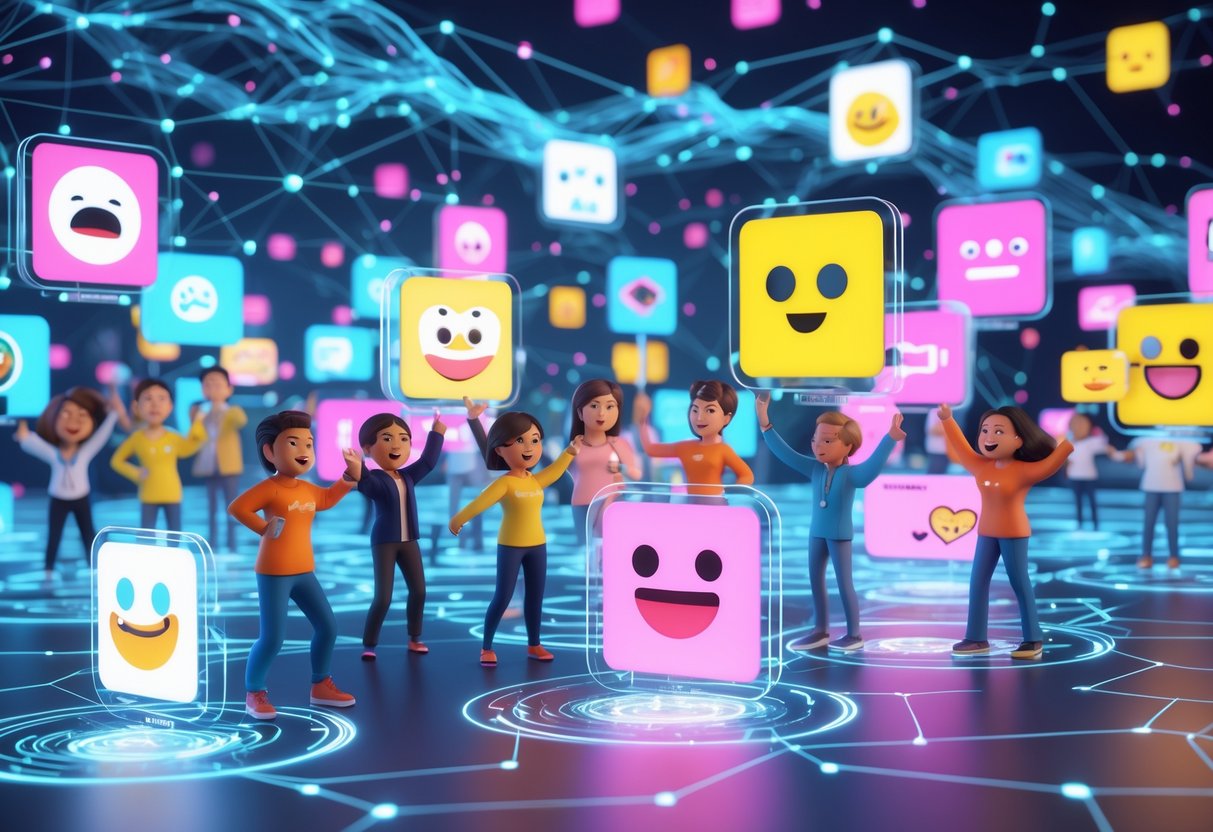
Meme formats evolve at a pace that almost feels impossible to keep up with. New viral patterns show up every day, and they bounce from platform to platform in a flash.
If you want to keep up, you have to spot rising trends quickly, adapt for each platform, and get your content out there fast—without losing that genuine touch.
Spotting and Responding to New Meme Formats
We really need systems that catch meme trends before they blow up. Viral memes usually follow patterns, and if you pay attention, you can track them.
Look for repeated phrases, image templates, or video formats popping up on several accounts. The big meme pages tend to experiment with new formats first. Gaming influencers often start trends that spill over into mainstream culture.
Reddit communities like r/MemeEconomy and r/dankmemes act as early testing labs. Twitter’s trending topics put emerging formats in the spotlight. TikTok’s “For You” page surfaces new video meme patterns before they hit everywhere else.
You have to time your response. Jump in while a trend’s still growing, not after it’s everywhere. If you’re late, it just feels off.
Keep an eye on how posts with new formats perform. If you see high share rates and comments piling up fast, that’s a good sign it could go viral. Save the best templates as soon as you spot them.
Adapting a meme format means you have to know where it came from. Every meme has its own unwritten rules about text placement, tone, and subject matter. Ignore those and you’ll probably flop.
Try new formats on small posts first. Track what actually clicks with your audience.
Platform-Specific Meme Strategies
Every platform has its own meme culture, and you can’t just copy-paste the same thing everywhere. What works on TikTok? Won’t fly on LinkedIn.
Twitter memes move ridiculously fast, and most are text-heavy. Users expect you to jump in on trending topics right away. Reaction GIFs and quote tweet memes rule here. We need tools for real-time trend spotting.
Instagram leans into visual memes with a lifestyle vibe. Stories let you join trends without clogging up your main feed. Reels go head-to-head with TikTok’s meme style.
TikTok is its own beast, inventing meme categories through audio trends and effects. Video memes here take a different skillset than static images. Trending sounds are the backbone.
| Platform | Meme Speed | Content Type | Best Timing |
|---|---|---|---|
| Instant | Text + image | Real-time | |
| Moderate | Visual-first | Peak hours | |
| TikTok | Very fast | Video + audio | Evening |
| Variable | Community-specific | Varies by subreddit |
LinkedIn needs a professional spin on memes. Think workplace humor and industry in-jokes, not random internet stuff.
Discord and Twitch have their own meme universes. Inside jokes and game-specific references rule those spaces.
Speed and Agility in Meme Adoption
Speed matters more than creativity when it comes to meme marketing. You need systems that let you create and approve content fast.
Set up pre-approved frameworks so you can react quickly. Build templates for common meme formats ahead of time. Keep legal and brand guidelines handy.
Dedicated monitoring helps you catch trends early. Use Google Trends, social listening tools, and trend trackers. Assign different team members to different platforms for better coverage.
Rapid creation workflows are a lifesaver. Simple editing tools beat fancy software for meme-making. Stock up on template libraries to move faster.
Quick approval processes keep you from missing the boat. Make clear which trends are safe to jump on right away. Set up an escalation process for riskier content.
Content calendars should leave room for trending topics. Save some space for spontaneous meme marketing. Don’t plan every single slot in advance.
Team coordination keeps your brand voice steady across platforms. Use shared docs to track which trends you’re joining. Avoid doubling up or sending mixed messages.
Performance tracking helps you get faster. Measure how quickly you react compared to your competitors. Check if early adoption actually gets you more engagement.
Measuring Meme Campaign Effectiveness
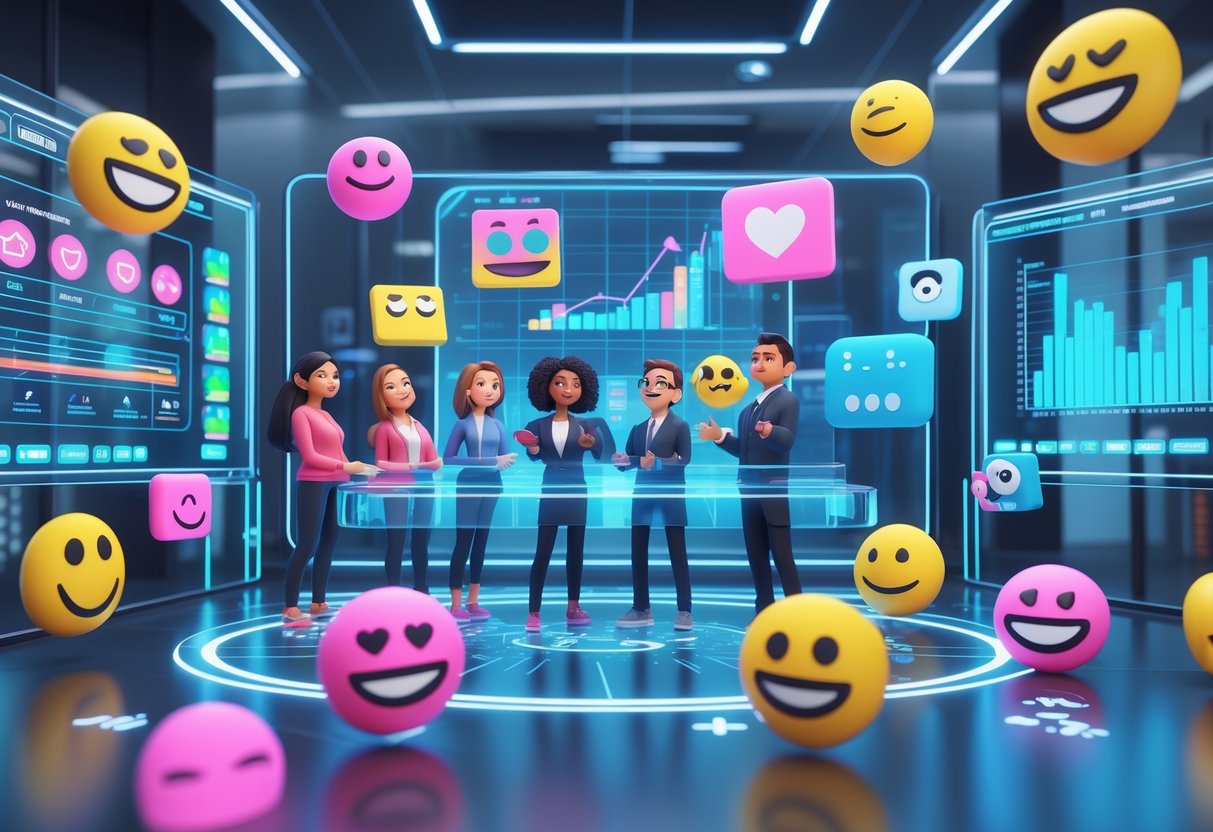
Standard metrics like reach and impressions don’t really tell you how your meme campaigns land. You need to look at engagement quality—are people actually interacting, laughing, sharing, or just scrolling past?
Tools for Tracking Social Engagement
You need the right tools to see how people react to your memes across platforms. Instagram, TikTok, and Twitter have built-in analytics, but third-party tools go way deeper.
Hootsuite and Sprout Social help you track engagement rates everywhere. They’ll show which memes rack up the most shares, comments, and saves, and how fast they spread.
BuzzSumo highlights which memes catch on in your industry. It tracks viral potential and lets you peek at what the competition’s doing. Brandwatch monitors sentiment in real time, so you can spot negative reactions early.
If you’re on a budget, Google Analytics tracks social traffic. Facebook Insights and Instagram Analytics are free, but only cover their own platforms.
Custom UTM codes let you see exactly which memes drive visits and conversions. It’s a bit more work, but worth it.
KPIs for Meme-Based Marketing
Meme success isn’t about likes. Shares, comments, and saves matter way more—they show people care enough to interact or pass it on.
Share-to-impression ratio tells you if your content’s actually compelling. If you hit 2-5% shares, you’re doing something right. Comments per post show if you’re sparking conversation, and saves mean people want to come back.
Engagement velocity measures how fast you rack up interactions. Viral memes usually peak within a day or two. Reach amplification shows how far your content travels beyond your followers.
| KPI | Good Performance | What It Measures |
|---|---|---|
| Share Rate | 2-5% of impressions | Viral potential |
| Comment Rate | 1-3% of reach | Audience connection |
| Save Rate | 0.5-2% of impressions | Content value |
| Engagement Velocity | Peak within 48 hours | Viral momentum |
Brand mention sentiment shows if your memes help or hurt your image. If negativity spikes, you need to act fast.
Learning From Data-Driven Insights
Data shows what meme types and timing work for your audience. Peak engagement times shift by platform and demographic, but evenings and weekends usually win.
Look at what formats perform best. Image memes, GIFs, or videos all get different results. Many brands see higher engagement from video memes, but they take more effort.
Audience overlap studies reveal which followers engage with both memes and your regular content. These folks often become brand advocates. Track how they move from memes to considering your products.
Failure teaches you too. When memes flop, it’s usually because you missed the cultural context or blew the timing. Keep notes on what doesn’t work so you don’t repeat mistakes.
A/B test different meme styles in similar campaigns. Try brand-forward versus subtle integration. Research leans toward more obvious branding, especially if your audience doesn’t know you well yet.
Analyze the language in your best memes. Using “you” and “your” makes people feel more involved and bumps up engagement.
The Future of Meme Culture Engagement
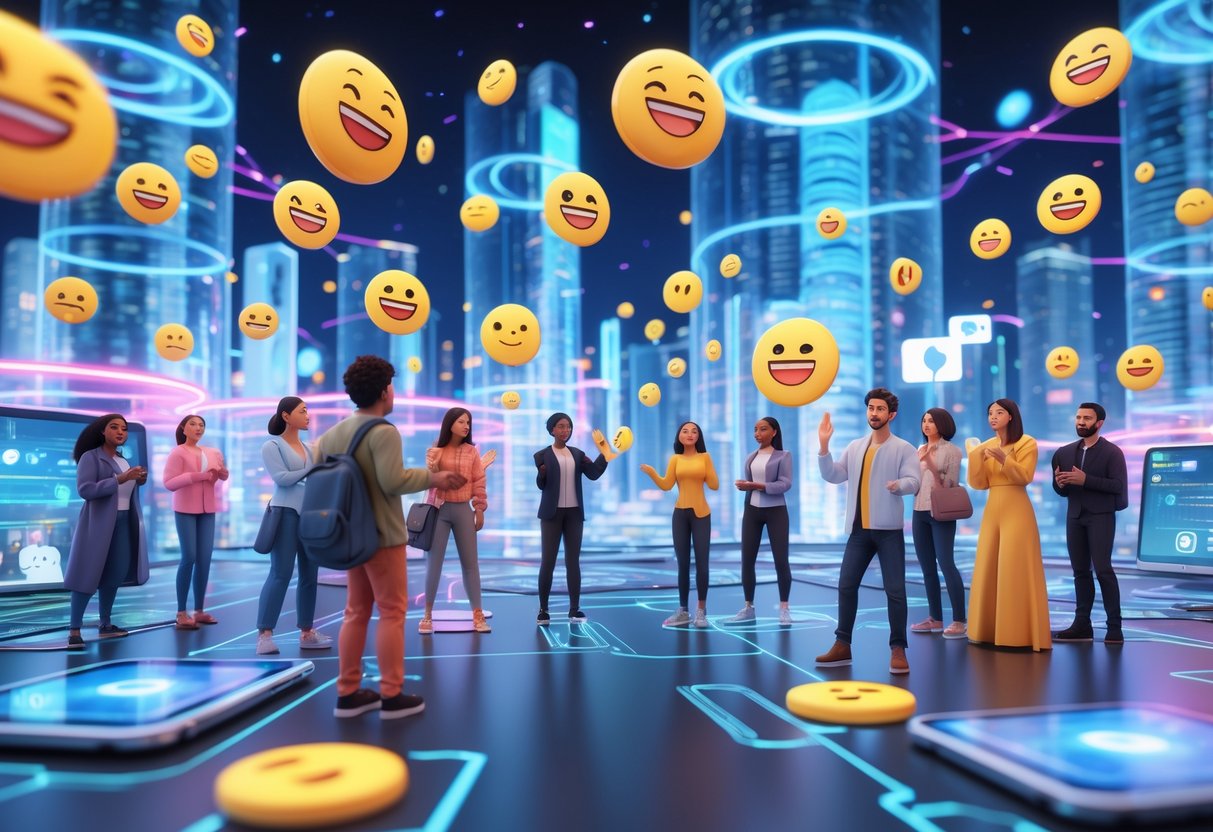
Meme culture keeps shifting as AI gets smarter and brands find new ways to connect with people through humor. It’s all getting more sophisticated, with brands trying to balance authenticity and business goals.
Trends Shaping Meme Engagement
Real-time meme creation is basically the gold standard now. Brands whip up memes within hours of big events—award shows, sports, you name it. That speed turns tiny moments into viral hits.
AI-powered meme generation is making it even easier to jump on trends. Companies use predictive analytics to spot memes before they explode, giving them a serious edge.
Platform-specific meme formats keep getting more important. Instagram loves carousel photo memes, while TikTok is all about quick videos with trending sounds. Brands that nail the right format for each platform see way better engagement.
User-generated meme content is blowing up because people want authenticity. Brands run hashtag challenges and contests to get followers making memes. It just feels more real than corporate stuff and builds a stronger community.
Long-Term Brand Loyalty Through Memes
Showing up consistently with meme content makes your brand stick in people’s minds, especially with younger crowds. Brands that keep a steady meme presence get better recognition than those who just run normal ads.
The real trick is making genuine connections, not just chasing viral moments. Brands that weave memes naturally into their communication—not as one-offs—see better results.
Research suggests meme-exposed audiences build stronger emotional ties with brands. Humor makes people like you, plain and simple. But honestly, it’s still murky if that always turns into more purchases.
Being part of meme culture keeps your brand relevant with all ages. If you can juggle different meme styles, you’ll connect with both Gen Z and older folks who appreciate clever humor.
Potential Challenges and Opportunities
Timing is still the biggest risk in meme marketing. If you post a meme after the trend’s dead, it just looks forced and can hurt your brand. Keep an eye on Reddit and TikTok for early signals.
Cultural sensitivity is tricky, too. Memes spread fast and cross communities, so review your content from multiple perspectives before posting. No one wants a backlash.
There’s also the risk of oversaturation. If every brand jumps on memes, people will get tired of it—especially if it feels fake or overly salesy. You have to truly get internet culture, not just copy trends.
On the plus side, there are new opportunities popping up. Deeper integration with gaming communities, virtual events, and interactive meme experiences are all on the rise. Brands that experiment here—and stay authentic—will probably see the best growth.
Frequently Asked Questions

Meme culture brings up a lot of real-world questions about how to actually pull this stuff off, measure it, and make it work. Here are some answers for brands and creators who want to use memes without coming off as try-hards.
How can brands effectively incorporate memes into their marketing strategies?
Start by figuring out your audience’s sense of humor and cultural references. Different groups like different meme styles—and they hang out on different platforms.
Find out where your people spend time online. Reddit users like niche, community-driven memes. Instagram fans go for visuals and quick, relatable captions.
Keep your brand voice steady, but adapt it for meme formats. Tweak popular templates with your colors or logo, but don’t kill the joke.
Try out different meme types on a small scale first. Watch engagement, comments, and shares to see what actually works before you go all in.
What are some successful case studies of companies engaging audiences through meme marketing?
Netflix India nails it with content that riffs on their own shows and uses witty captions. They connect with viewers by referencing shared experiences from their programming.
Zomato has built a strong following by sticking to food-related memes that match their brand. Their stuff feels real, not forced.
Swiggy gets it—using memes about food delivery that their audience actually lives through. It’s relatable and shareable.
Brand Factory India keeps things light and inoffensive, which helps them get engagement without stepping on any toes. That builds positive brand associations.
What tips should content creators keep in mind when creating memes for promotional purposes?
Stay true to your brand voice and values. If you force a trendy meme that doesn’t fit, people will notice.
Keep up with trends, but don’t feel like you have to chase every single one. Focus on memes that honestly connect to what you offer.
Test your memes with a small audience first. What cracks you up in the office might not land with your customers.
Steer clear of anything offensive or controversial—it’s not worth the risk. If you’re not sure, play it safe.
Post your memes when your audience is actually online. Timing really does make a difference.
In what ways can memes contribute to a brand’s storytelling and audience connection?
Memes build emotional connections because they tap into shared experiences and cultural references. They make it easy to communicate complicated ideas in a way people get.
They’re great conversation starters. Folks are way more likely to comment or share if your content makes them laugh or feel seen.
Memes can show your brand’s personality and sense of humor, which helps build trust—especially with younger audiences.
They also act as a bridge to your other stuff. A funny meme can pull people in and then point them toward your products, services, or educational content.
How does meme virality impact consumer engagement and brand visibility on platforms like Instagram?
Viral memes can really boost your brand’s reach. Suddenly, people who’ve never heard of you might see your content just because someone else shared it.
When a meme clicks with folks, engagement rates usually jump. That extra buzz tells Instagram’s algorithm, “Hey, people like this—show it to more users!”
Viral moments tend to snowball. As more people notice your brand, you’ll probably pick up new followers, which means your next posts could go even further.
Still, chasing virality is a bit of a gamble. Nobody can guarantee it, so it’s smarter to stick with solid, consistent content instead of just hoping for a big break.
Can meme marketing be seen as a legitimate avenue for study and academic research in advertising?
Absolutely—meme marketing marks a real shift in how brands try to connect with digital-native audiences. More and more, academic institutions are starting to look at its effectiveness and what it means for culture.
Researchers dive into how memes work as a kind of cultural currency. They also explore how memes shape brand awareness and influence what people do online.
People can actually measure results from meme campaigns, which gives researchers some solid data to work with. You’ll see metrics like engagement rates, reach, and conversion rates popping up as proof of what works (or doesn’t).
Universities have started adding social media marketing and digital culture studies to their advertising and marketing programs. Meme marketing fits right into these new academic directions.

